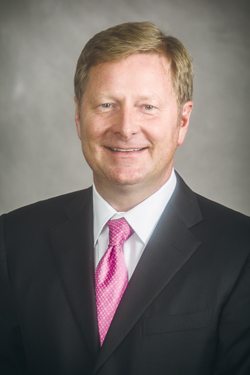Obamacare in crosshairs (OPINION)
by December 19, 2016 12:00 am 248 views

It was about 10 p.m. on election night when I decided it was time for bed. The next day was going to be a long one, starting with a 6 a.m. flight to Washington, D.C., for an afternoon speech at a national insurance conference. Along with other topics of interest, I was invited to provide a post-election analysis on the future of healthcare — specifically, President Barack Obama’s signature healthcare law.
This was a pretty easy topic to prepare for. After all, the outcome of the presidential election was a foregone conclusion and Hillary Clinton would simply grab the keys to the White House from President Obama on his way out the door. “Obamacare” was secure — perhaps more philosophically than fiscally — and likely to accelerate toward a single-payer system over the next four years. With private insurers dropping out of the federal marketplace en masse, passage of a public option was the logical next step in a government takeover of healthcare. I rolled out of bed at 3:30 a.m. and grabbed my phone to take a quick look at Clinton’s final margin of victory.
Change of plans.
Spending the next four hours and two legs on the flight trying to re-write the narrative of healthcare’s future under Republican control made me quickly realize there was no narrative. While Republicans have been hell-bent on repealing and replacing “Obamacare” since 2010, there’s no consensus bill waiting to be signed by the new president. And the new president has only offered sound bites around what “Trumpcare” might look like.
Since the election and subsequent meeting with President Obama in the Oval Office, President-elect Donald Trump has stated publicly that he would like to keep two key provisions of the law: guaranteed coverage for pre-existing conditions and allowing kids to stay on their parents’ plans until age 26. This would imply modification of the existing law over repeal. But as the civics lesson of 2016 has taught us, rhetoric and policy are not necessarily one in the same.
Policy points on the president-elect’s campaign website, while short on detail, also speak to repeal while simultaneously advocating modification of existing law to promote the sale of health insurance across state lines. Additional proposals include allowing individuals to fully deduct health insurance premiums, requiring price transparency from all healthcare providers, block-grant Medicaid to the states, and removing barriers for safe, affordable prescriptions to be purchased from tier one countries overseas.
Congressional Republicans, led by Paul Ryan, are floating the “Better Way Plan” among House members, which is similar to the Burr, Hatch and Upton plan. Both call for the repeal of “Obamacare,” but neither are very clear on exactly how that will happen. In concert with Trump’s proposals, the GOP plans include privatizing Medicare and moving Medicaid control to the states.
Other concerns addressed in the GOP plans include pre-existing conditions versus continuous coverage language, funding the state-based high risk pools, deregulating “Obamacare’s” rate ratios to allow older, sicker Americans to be charged more for coverage, and even removing the individual mandate. The latter, while controversial and ultimately upheld by the Supreme Court, would upend the cornerstone of affordable coverage by allowing healthy individuals to sit on the sidelines.
The fact of the matter is, unwinding an expansive law like the Affordable Care Act is easier said than done. For Republicans to succeed, they will need to convince Democrats that replacement legislation will cover the same or more Americans than the current law. While many of the regulatory provisions of “Obamacare” were enacted under executive order and can be reversed using the same method, a bipartisan replacement bill is the only way to come up with the 60 votes necessary in the Senate to overcome a Democratic filibuster.
Given the fact Republicans have yet to agree on their own terms, I would expect that a completely new direction for healthcare in this country will take more than 100 days.
Tom Hayes is the national practice leader for employee benefits at Regions Insurance, a top-30 national insurance brokerage with 26 offices in 10 states in the Southeast and Indiana. He can be reached at [email protected]. The opinions expressed are those of the author.
